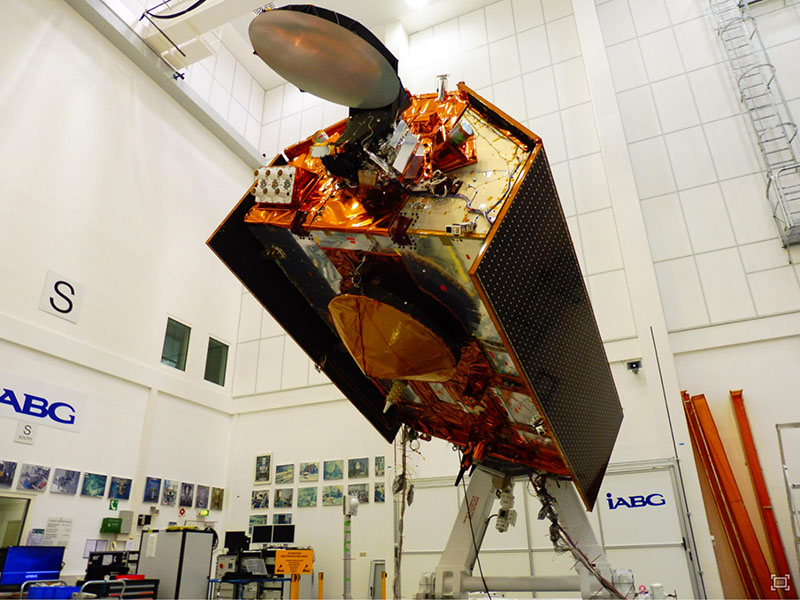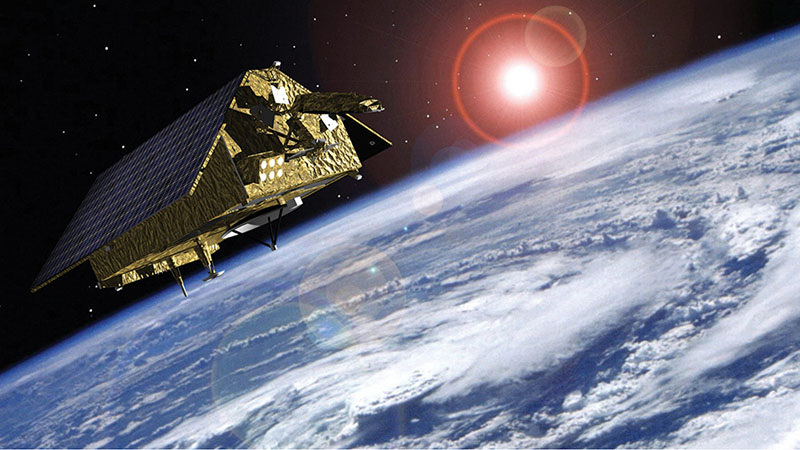Spacecraft
Size: 16 feet, 11 inches (5.15 meters) long; 7 feet, 7 inches (2.35 meters) high; 8 feet, 5 inches (2.58 meters) wide (the approximate size of a small pickup truck).
Mass: 2,628 pounds (1,192 kilograms), including onboard propellant at launch.
Power: Two fixed solar arrays, plus two deployable solar panels.
Batteries: 200-amp-hour battery consisting of 1,152 lithium-ion cells.
Instruments: Radar altimeter, advanced microwave radiometer for climate, GNSS for radio occultation (RO), laser retroreflector, DORIS, and GNSS for precise orbit determination (POD).



